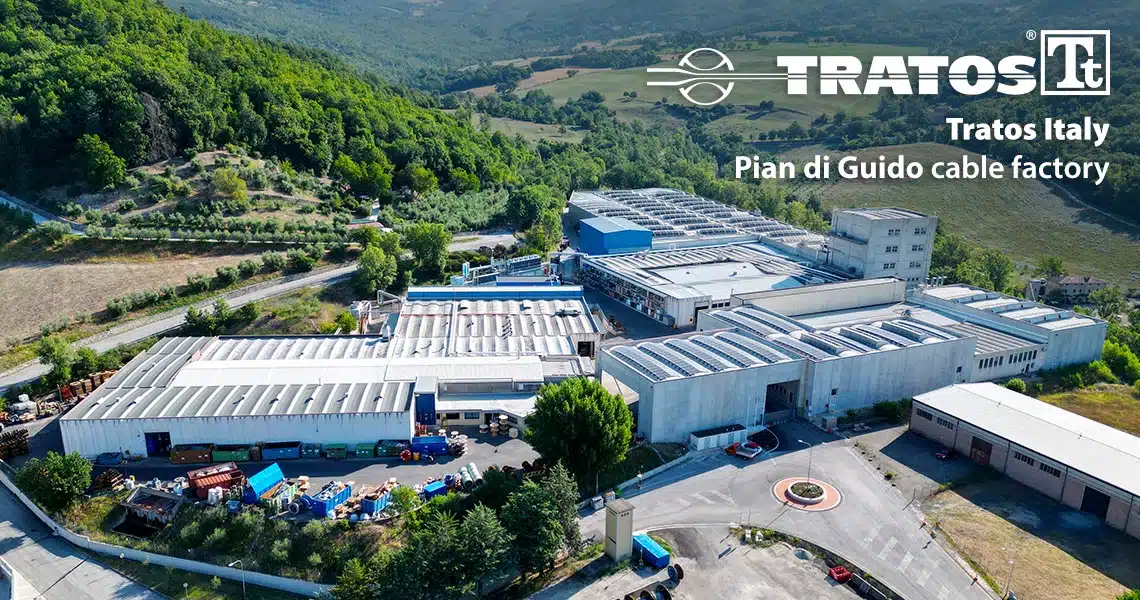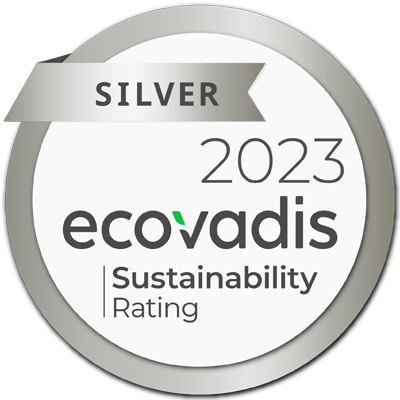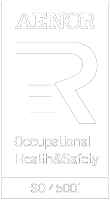At Tratos, we pride ourselves on our advanced global manufacturing capabilities, with strategically located facilities across Europe and beyond. Our state-of-the-art production sites embody our dedication to innovation, quality, and sustainability, providing world-class cable solutions for telecommunications, energy, infrastructure, and other industries.
Our production site, located in Pian di Guido, Tuscany, established itself as the cornerstone of Tratos’ manufacturing excellence.
The Tratos High Voltage (HV) Metallurgic Department is a cornerstone of our cable manufacturing excellence, specializing in the transformation of high-purity aluminium and copper rods into conductors that meet the rigorous IEC 60228 standard. This department produces solid (Class 1), stranded (Class 2), flexible (Class 5), and extra-flexible (Class 6) conductors, supporting applications ranging from fixed installations to dynamic environments such as industrial automation and robotics. Advanced wire-drawing and annealing processes ensure precise dimensions, optimal ductility, and low resistance, which are critical for power transmission efficiency. Our conductors, ranging from 0.5 mm² to over 2,000 mm², are crafted with exacting tolerances and subjected to stringent testing for DC resistance, tensile strength, and flexibility to guarantee superior performance. With a commitment to innovation, the department also adheres to environmental and safety standards, ensuring sustainable production. This meticulous approach positions Tratos as a leader in delivering reliable, high-quality HV cables for energy, telecommunications, and industrial sectors worldwide.
Tratos HV, a member of Tratos Cavi S.p.A, manufactures cables in compliance with the specifications detailed in this report, ensuring adherence to IEC 60228 standards.
IEC 60228, published by the International Electrotechnical Commission, provides standardized specifications for the construction and electrical properties of conductors used in insulated cables. It defines conductor types, material properties, and test methods to ensure consistency, reliability, and performance in electrical and communication systems globally.
Key Aspects of IEC 60228
Scope
The standard applies to conductors made of aluminium or copper used in power cables, control cables, and communication cables. It specifies requirements for both single-core and multi-core cables, providing a framework for classification, construction, and testing.
Conductor Classes
IEC 60228 categorizes conductors into four classes based on their mechanical and electrical properties:
- Class 1: Solid Conductors
- Used for fixed installations.
- Made from a single strand of aluminium or copper.
- Class 2: Stranded Conductors
- Designed for fixed installations with better flexibility than Class 1.
- Composed of multiple strands, ensuring enhanced mechanical performance.
- Class 5: Flexible Conductors
- Suitable for applications requiring flexibility, such as movable equipment.
- Class 6: Extra Flexible Conductors
- Used in highly dynamic or mobile applications, such as robotics and instrumentation.
Material Specifications
- Copper (Cu): High conductivity electrolytic grade, annealed or hard-drawn.
- Aluminum (Al): Electrical grade, ensuring lightweight and corrosion resistance.
- Material purity and surface finish are critical for performance.
Construction Requirements
- Dimensions:
- Conductor diameter and cross-sectional area must conform to specified tolerances.
- Cross-sectional areas range from 0.5 mm² to over 2,000 mm², depending on application.
- Stranding:
- Precise stranding techniques ensure compactness and uniformity.
- Stranding pitches and lay lengths are controlled to balance flexibility and conductivity.
Electrical Properties
- DC Resistance:
- Maximum allowable resistance values are defined for each class and cross-section at 20°C.
- Low resistance ensures high efficiency in power transmission.
- Conductivity:
- Copper: ≥ 100% International Annealed Copper Standard (IACS).
- Aluminium: ≥ 61% IACS.
Testing Methods
- Dimensional Testing:
- Verification of conductor diameter and cross-sectional area.
- Electrical Resistance Testing:
- Measurement of DC resistance to ensure compliance.
- Mechanical Testing:
- Tensile strength and elongation tests validate mechanical durability.
- Flexibility Testing:
- Bending and fatigue tests for flexible and extra-flexible conductors.
Environmental and Safety Considerations
The standard supports compliance with environmental norms, ensuring safe disposal and minimal environmental impact during production and end-of-life phases.
Applications
IEC 60228-compliant conductors are used in various sectors:
- Energy Transmission and Distribution: Power cables in buildings and infrastructure.
- Automotive and Aerospace: Lightweight and flexible cables.
- Telecommunications: High-frequency signal transmission cables.
- Industrial Automation: Flexible cables in dynamic environments.
Tratos HV, as part of Tratos Cavi S.p.A, is committed to producing high-quality cables that fully comply with IEC 60228 standards, reflecting its dedication to excellence and reliability in the cable manufacturing industry. IEC 60228 ensures standardized conductor specifications, promoting reliability, compatibility, and safety in electrical and communication systems worldwide. Its classifications and rigorous testing methods enable manufacturers and users to select appropriate conductors for diverse applications, aligning with global best practices.
Tratos HV: Setting Industry Standards Through Internal Compound Development
Tratos HV, an integral part of Tratos Cavi S.p.A., leads the industry in the internal development and production of advanced compounds for cable insulation and sheathing. This in-house capability enables Tratos to maintain unmatched quality control, optimize material performance, and ensure strict compliance with international standards.
Comprehensive Internal Production
Unlike many cable manufacturers who rely on external suppliers for key materials, Tratos HV produces nearly all insulation and sheathing compounds in its state-of-the-art facilities. From thermoplastics to thermosetting elastomers, every compound is developed to meet the specific needs of high-voltage (HV) and extra-high-voltage (EHV) cables. This approach not only enhances product reliability but also allows customization to cater to unique customer requirements.
Standards of Reference for Tratos HV Compounds
- Cross-Linked Polyethylene (XLPE):
- Applications: XLPE is widely used for HV and EHV cable insulation.
- Standards: Manufactured in compliance with IEC 60502, IEC 60840, and IEC 62067 for medium to extra-high voltage applications, ensuring excellent dielectric strength, thermal stability, and resistance to aging.
- Properties: Delivers low electrical losses, high mechanical strength, and enhanced thermal resistance, making it ideal for critical infrastructure projects.
- Ethylene Propylene Rubber (EPR):
- Applications: Preferred for offshore, marine, and industrial applications.
- Standards: Conforms to IEC 60092 for shipboard cables and IEC 60245 for rubber-insulated flexible cables.
- Properties: Offers outstanding flexibility, excellent resistance to moisture, and high tolerance to extreme temperatures.
- Polyvinyl Chloride (PVC):
- Applications: Used for both insulation and sheathing in low to medium voltage applications.
- Standards: Adheres to EN 50267 and IEC 60754, ensuring low-smoke, halogen-free performance.
- Properties: Combines durability with excellent resistance to chemicals, UV radiation, and abrasion.
- Low-Smoke Zero-Halogen (LSZH) Thermoplastics:
- Applications: Ideal for use in public buildings, transportation systems, and other areas requiring enhanced fire safety.
- Standards: Meets IEC 60754, IEC 61034, and BS 7211 for reduced smoke and toxic gas emissions during combustion.
- Properties: Provides superior fire performance and environmental safety.
- Chlorinated Polyethylene (CPE) and Chlorosulphonated Polyethylene (CSP):
- Applications: Commonly used for sheathing in harsh environments, including industrial and offshore settings.
- Standards: Manufactured in line with EN 50363 and IEC 60811 for chemical and environmental resistance.
Advanced Material Composition
Tratos compounds are not simple polymers but highly engineered formulations designed to enhance performance across a range of applications. These formulations typically include:
- Fillers: To improve electrical or mechanical properties.
- Plasticizers: For enhanced flexibility, especially at low temperatures.
- Antioxidants and UV Stabilizers: To prevent ageing and degradation.
- Curing Agents and Accelerators (for thermosets): To achieve optimal cross-linking.
- Pigments: For custom coloring as per application requirements.
The additive levels in these compounds vary depending on the specific application, with polymer content ranging from 30% in elastomeric sheathing compounds to as high as 97% for MV and HV XLPE insulation.
Insulation and Sheathing: Engineered for Performance
- Insulation: Designed to separate and protect conductors under high voltage, Tratos insulation materials provide exceptional dielectric properties and meet stringent safety and operational standards.
- Sheathing: Serving as the outermost layer, Tratos sheaths protect cables from mechanical, chemical, and environmental stresses, ensuring longevity and reliability in the harshest conditions.
Why Tratos HV?
By producing its compounds internally, Tratos HV guarantees:
- Precision Engineering: Custom compounds tailored to specific project requirements.
- Compliance and Quality: Adherence to the highest international standards, including IEC, BS, and EN specifications.
- Sustainability: Reduced environmental impact through controlled manufacturing processes.
- Innovation: Continuous R&D efforts to create cutting-edge materials for emerging applications.
Tratos HV’s expertise in material development not only supports the reliability of its HV and EHV cables but also strengthens its position as a global leader in advanced cable technology.










